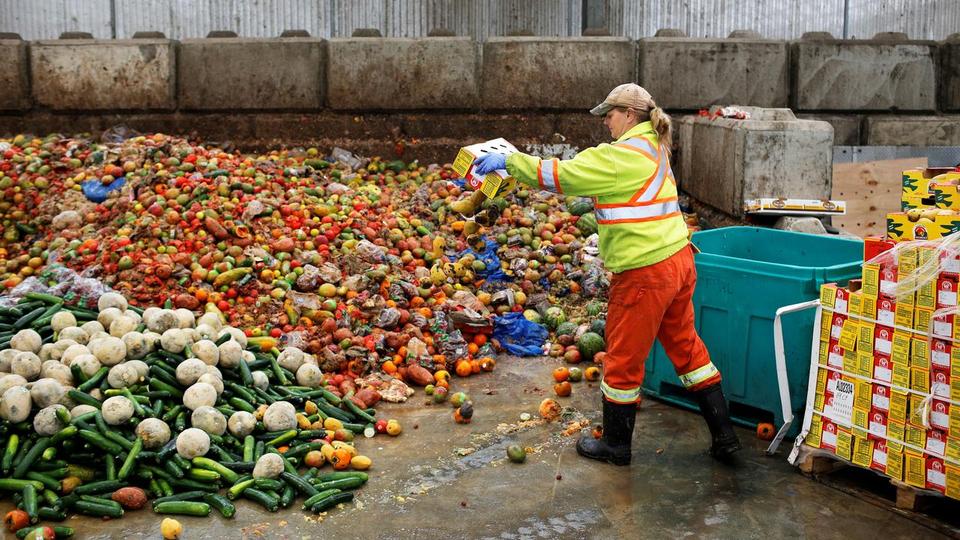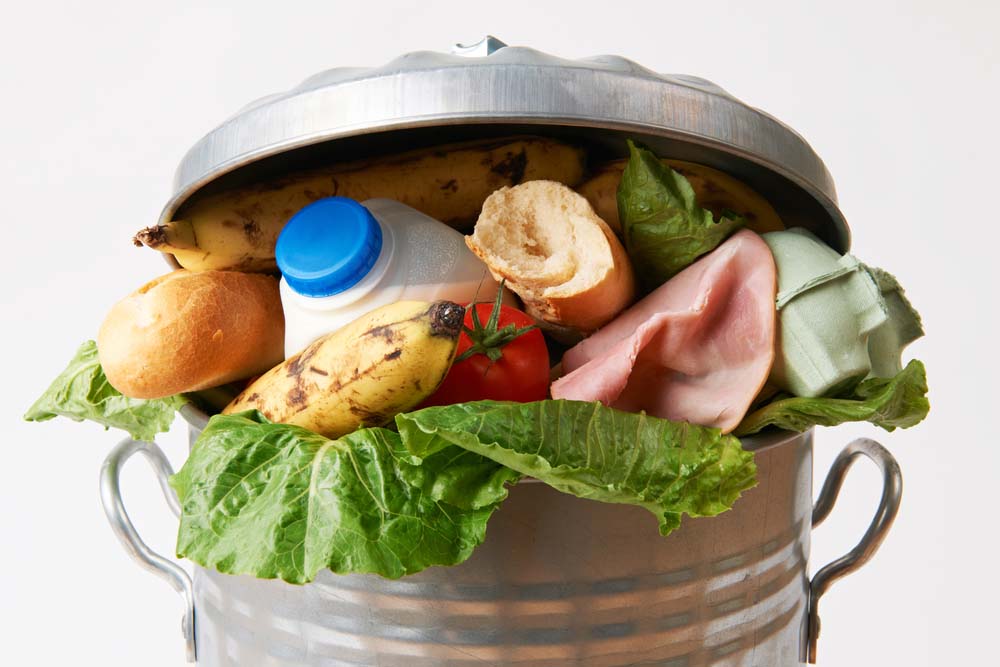Retail Food Waste – The Scale of The Problem
According to the UN’s Food and Agriculture Organisation, one-third of the food produced for human consumption does not make it to our plates which equates to 1.3bn tonnes of food per year. Food waste occurs along the entire food supply chain which results in financial losses and waste of natural resources. Approximately two-thirds of all food waste is avoidable and the food we waste consumes an estimated 20% of freshwater, fertiliser, cropland and landfill volume.
The UN Sustainable Food Development Goal has a specific target to halve food waste by 2030. The position of Retailers in the food systems means they play a role significantly influencing upstream and downstream handing of food.
Main types of food waste at retail & distribution level
- Recalled product
- Damaged food
- Spoilage
- Unsold stock
- Short-dated product
Consumer pressure favouring responsibly sourced products is a key driver forcing corporates to reduce waste. For the retailer, managing inventory to avoid waste and stocking high quality products with long shelf lives are increasingly seen as a competitive differentiator by customers.
Types & Causes of Food Waste
Food that contributes to food waste include, 45% of all fruits and vegetables, 35% of fish and seafood, 30% of cereals, 20% of dairy products and 20% of meat. Some of the main causes are:
- Delivery issues- delayed deliveries or overstock
- Regular replenishment of stocks leading to customers to select the most recent products
- Poor demand forecasting- results in overstocking
- Expired shelf-life- past the best-before or use-by date
- Visual defects/damage to the food item itself of the packaging- make it unsellable

The Environmental, Economic & Social Impact of Food Waste
Environment
- Food loss and food waste carry a huge environmental burden. Lost and wasted food means a loss of all the resources that go into making it, such as water, soil, energy and more. All the wasted food generates between 8% and 10% of the world’s total human induced greenhouse gases (GHG) emissions which provokes climate changes such as floods, droughts and heat. In comparison, the global aviation industry which produces 2-3% GHG. This use of natural resources that drives up costs, inflates food prices and weakens.
Economic
- Reduction in food waste would result in economic benefits such as lower disposal costs, reduced overhead purchasing, labour costs and tax benefits from donating foods. For example, in developed countries food waste affects pricing policy as a result, people with minimum incomes who cannot afford to spend more money on food are most at risk. The price of food is also largely linked to environmental causes.
Social
- Despite the fact that enough food is produced in the world, nearly a billion people suffer from hunger and malnutrition. According to the European Parliament’s Committee on Agriculture, up to 50% of edible and harmless food is unnecessarily depreciated and thrown away in European homes, supermarkets, restaurants and along the entire food chain every
year.

Preventative Measures & Solutions in The Food Supply Chain to Reduce Food Waste
1. Use-by-dates
The UK retailer Co-op is scrapping use-by-dates on own brand yoghurts in a bid to reduce food waste. Approx. 42,000 tonnes ($127.6 million worth) of edible yoghurts are thrown out by UK households each year. By removing the date labels, will help prevent unnecessary as testing has shown that yoghurt is safe to consumer the use-by date. The date range on food products is a significant reason that it is wasted in households.
2. Monitor use-by dates
Chowberry- is focused on ending food waste in Africa by connecting families in need to local supermarkets with nearly expired foods. Stores use the Chowberry app to scan the barcodes of food products. Once uploaded, the app informs retailers when the products have reached the “best before” date and automatically offers those products at a reduced price through the app and the accompanying retail website. The closer the products are to the latest possible selling date, the lower the price is to enable dynamic pricing in food retail. For more economically unstable families, the app helps provide more affordable and consistent food options without causing retailers to lose profit.
3. Data tracking
Escavox innovative start-up that offers sensor for data collection to help growers, retailers and manufacturers to manage their supply chain more efficiently. The sensor increases visibility throughout the supply chain as the hardware travels with the food. Also, aids in inventory management to reduce excess inventory and handling, cut down on the amount of perishables
4. Redistribute Surplus Food
Tonnes of food that goes to waste each year is still edible. Companies, charities and individuals can all benefit from the redistribution of surplus food to those who need it.
Food companies can often save money be donating food rather than paying the per tonne landfill tax and disposal cost. For example, a law as been introduced in France which has banned French supermarkets from throwing away or destroying unsold food and must donate it to food banks or for animal feed. Also, social enterprises such as Food Cloud connects food retailers with charities so they can efficiently donate good food that would otherwise be thrown away.
A recent phenomenon, Dumpster Diving, has been taking on the food waste in the retail sector in the US and EU. Rob Greenfield and Caitin Weich are just two dumpster divers, who are foraging through supermarket bins to collect perfectly good food. A whole third of the food that goes into our supermarkets ends up in the bin and will never even make it to consumer’s homes. These two dumpster divers are raising awareness of this huge amounts of unnecessary food supermarkets dump.
5. Law
Policy can play a positive role in reducing food waste and Ireland’s National Waste Policy 2020- 2025, commits to developing a Food Waste Prevention Roadmap that provides the pathway to help achieve Ireland’s goal of reducing food waste by 50% by 2030.
Anaerobic Digestion for Food Waste
Anaerobic digestion occurs naturally, in the absence of oxygen, as bacteria break down organic
materials and produce biogas. The process reduces the amount of material and produces biogas,
which can be used as an energy source. Over 30 million ton. Over 30 million tonnes of food waste is sent to landfills each year.
Reasons to divert food waste from landfills 1) Food is easily biodegradable and 2) Renewable energy generation.
Food waste is highly biodegradable and has a much higher volatile solids destruction rate (86-90%) than biosolids. Biosolids are solid organic matter recovered from treatment and used as fertiliser. This means that even though additional material is added to the digesters, the end residual will only increase by a small amount.
Food waste can be converted into energy in an anaerobic digester by using naturally occurring bacteria to break down organic waste into biogas and an organic fertiliser by product. It also leads to the creation of what is known as digestate, which is a nutrient-rich organic fertiliser that farmers can use on their land and is better for both the land and the environment than raw slurry. The digestate also helps reduce farmers’ dependence on costly fossil fuel-based chemical fertilisers.
Food Waste- Reduction and Prevention is Vital in The Retail Sector
Food wastage is a problem throughout the food chain, and action needs to be taken at all stages to ensure that all stakeholders can benefit. A third of the food we produce never gets into our mouths. Either it is not picked up by farmers during harvesting, is lost when being transported to shops, or simply thrown away due to the use by date or it is considered imperfect produce. Each of us plays our role as supporters and advocates for reducing waste. Prevention should be particularly emphasized, as preventing wastage is more advantageous in all respects than following it up. In fact, the less food wasted, the fewer the related impacts which would lead to an improvement in the sustainability of the entire food service sector.
Fill out the contact form below to find out more

